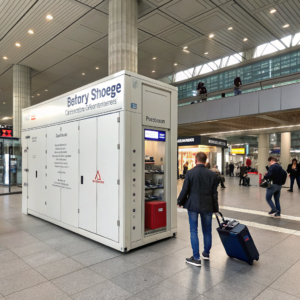PERC Technology in Solar Cells: Efficiency Unlocked
•
What's driving the 25% efficiency gains in modern solar panels? The answer lies in PERC technology - a revolutionary cell architecture that's transforming photovoltaic performance.
PERC (Passivated Emitter and Rear Cell) technology boosts solar efficiency by adding a rear passivation layer, reducing electron recombination and increasing light absorption to achieve 22-24% efficiency in commercial panels.
As the solar industry's dominant technology, PERC represents a significant leap forward from conventional solar cells, offering both performance improvements and manufacturing scalability that's reshaping global photovoltaic markets.
Structure and Working Principle of PERC Cells
How does PERC's unique architecture outperform traditional solar cells? The secret lies in its sophisticated rear-side design that maximizes every photon's potential.
PERC cells feature a dielectric passivation layer on the rear surface that reflects unused light back into the cell while reducing electron recombination, combining with laser-doped contacts to optimize current collection.
Key Components and Their Functions
-
Rear Passivation Layer
- Typically aluminum oxide (Al₂O₃) or silicon nitride (SiNₓ)
- Reflects unabsorbed photons back into the cell
- Reduces surface recombination velocity from >1000 cm/s to <100 cm/s
-
Laser-Doped Contacts Feature Benefit Precise openings Minimizes contact area Localized doping Reduces recombination losses Self-aligned process Improves manufacturing yield -
Performance Comparison Parameter Standard Cell PERC Cell Efficiency 18-20% 22-24% Voc (Voltage) 0.65V 0.68-0.70V Temperature Coefficient -0.45%/°C -0.38%/°C
"PERC technology typically delivers 5-8% more annual energy yield than conventional cells, with the greatest benefits in high-temperature environments" - Solar Energy Industries Association
How Does PERC Improve Light Absorption?
Why do PERC cells capture more sunlight than conventional designs? The answer involves clever light management that turns limitations into advantages.
PERC cells increase light absorption through rear-side reflection and improved internal trapping, allowing longer photon paths and multiple absorption opportunities - boosting current generation by 1-2A per cell.
The Photon Recycling Effect
-
Rear Surface Reflection
- 90%+ of unabsorbed light reflected back
- Dielectric layer acts as mirror
- Particularly effective for long-wavelength light
-
Internal Light Trapping
- Textured front surface scatters incoming light
- Bulk silicon absorbs during multiple passes
- Enhanced response in 900-1200nm spectrum
-
Performance Impacts
- 3-5% increase in short-circuit current (Isc)
- Better low-light performance
- More stable output under partial shading
Manufacturing Insight: Modern PERC production lines achieve >23% efficiency through optimized rear coatings and advanced laser patterning techniques that minimize parasitic absorption.
PERC vs. TOPCon: Efficiency Comparison
Is PERC still the king of solar cell technologies? While TOPCon emerges as a strong competitor, PERC maintains crucial advantages in cost and manufacturability.
TOPCon cells achieve slightly higher efficiency (24-25%) than PERC through full surface passivation, but require more complex manufacturing with 5-7 additional steps that increase production costs by 15-20%.
Technology Cross-Comparison
-
Efficiency Potential
- PERC: 22-24% (mass production)
- TOPCon: 24-26% (with selective contacts)
- Laboratory records: 24.1% vs 26.1%
-
Manufacturing Considerations Factor PERC TOPCon Process Steps 9-11 14-16 Capital Cost $0.25/W $0.30/W Silver Usage 90mg/cell 110mg/cell -
Market Position
- PERC: 60% global market share (2024)
- TOPCon: Rapidly growing to ~25%
- PERC remains dominant for residential
- TOPCon gaining in utility-scale
Industry Projection: PERC will maintain 40%+ market share through 2028 due to its superior cost-performance ratio, with TOPCon dominating new capacity additions beyond 2026.
Conclusion
PERC technology continues to set the standard for solar cell efficiency and manufacturability, delivering proven performance improvements while paving the way for next-generation photovoltaic innovations.








